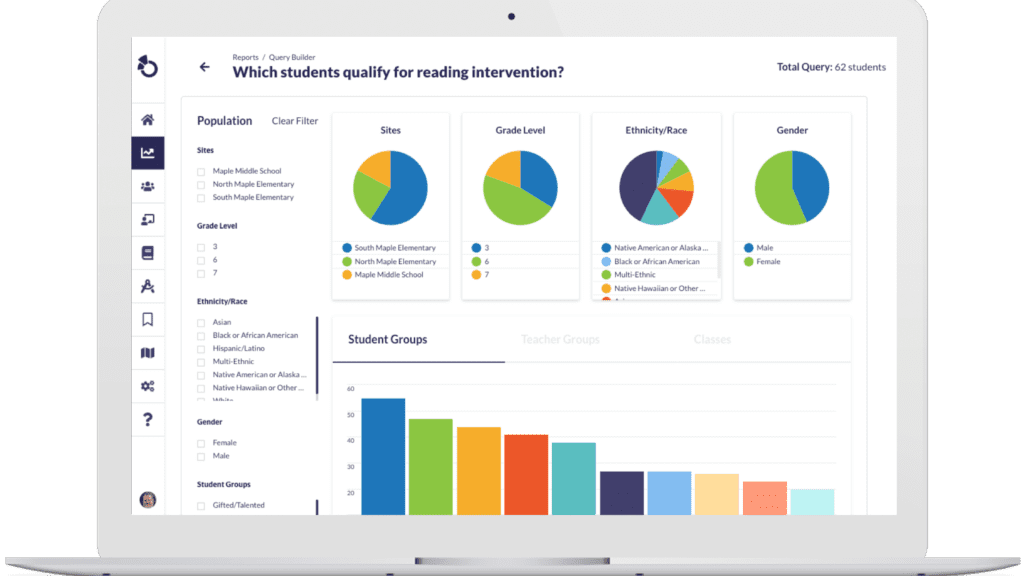The Ultimate Guide to Differentiated Instruction
What is differentiated instruction?
Unlike many teaching approaches that focus on a single strategy to improve student learning, differentiated instruction is a framework that allows teachers to incorporate many different strategies in their classrooms to reach as many students’ personalized educational needs as possible.
Using varying instructional strategies in a classroom or lesson allows teachers to reach all students no matter their skill level, language level, or ability level. Differentiated instruction is an invaluable resource for teachers who have students at many different levels.
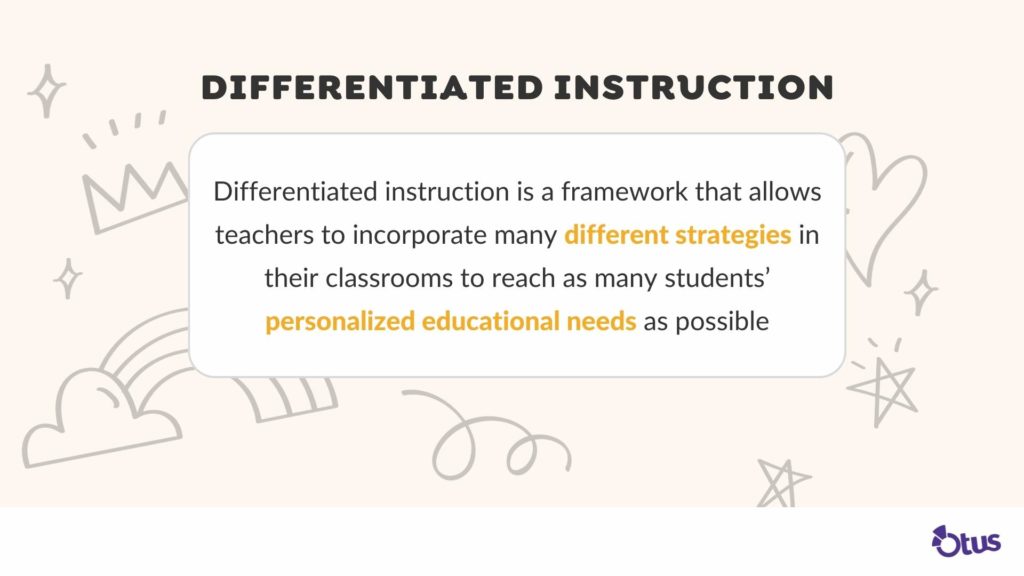
Additionally, a differentiated instruction framework provides teachers with an excellent framework for classroom management, student grouping, and student assessment. It is an essential practice for teachers who are focused on standards-based grading, mastery learning, and teaching to their students’ zones of proximal development.
It is important to note that differentiated instruction does not mean that teachers must create an individual instructional plan for each student, and each lesson. Instead, teachers think critically about each of their students’ needs. Then, they strategically group their students and provide instructional strategies and formative and summative assessment options tailored specifically to that group’s needs.
What does differentiation mean in instruction?
The simplest way to explain what differentiation means in instruction is to think of instruction as student-centered rather than teacher-centered.
Traditionally, classroom education has revolved around the teacher: the teacher instructs in the way that works best for him or her, usually to the entire class; the teacher assigns homework that is generally standard across all groups; the teacher gives a summative assessment with the goal of a “good grade;” the teacher grades the assessment and may or may not give feedback; the teacher decides when to move on to the next lesson.
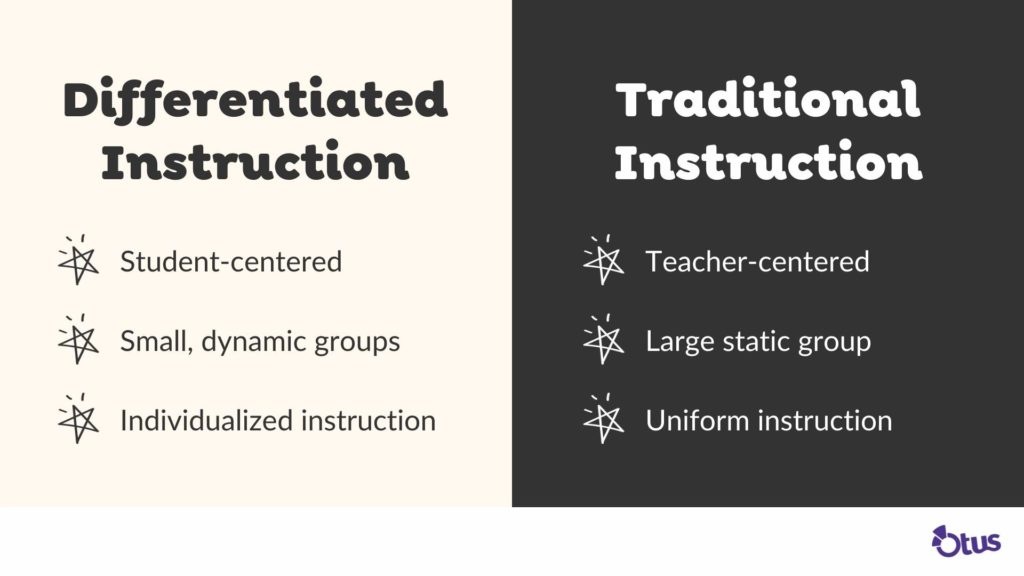
However, when a teacher chooses to differentiate instruction, the teacher chooses to focus on the students’ needs. This plays out across planning, instruction, and assessment:
- In the first step in differentiating instruction, the teacher must thoughtfully divide students into smaller groups that will best facilitate their understanding of the learning targets and objectives. Perhaps the teacher wants to group students based on similar instructional needs, or perhaps the teacher groups them based on interests. Occasionally, teachers may find it effective to allow students to choose their own groups, or to bring all the groups together into one large group for activities such as group discussions.
However a teacher decides to group students, it is essential that these groups do not remain static throughout an entire school year. It is most helpful to switch groups up regularly: perhaps throughout the day, using different groups for different subjects in an elementary school setting, or perhaps at the beginning of each new unit for upper-level subjects.
- In the second step in differentiating instruction, the teacher must provide a variety of ways for students to learn the content. Although direct instruction may be one of the ways teachers provide knowledge, teachers should provide a variety of other resources like books, videos, or hands-on experiences, as well.
One group may not receive the same types of resources as another group for learning. In differentiated instruction, fair is not defined as equal, but as each student receiving what they need to be challenged and to grow. This ensures that all students–regardless of ability level–are learning in their zones of proximal development to engage, challenge, and learn.
- In the third step in differentiating instruction, the teacher must offer many different ways for the students to engage with the content through many different individualized forms of formative assessment. The teacher should be providing formative assessment regularly in short, easy-to-analyze methods. This allows the teacher to know when and where to adjust instruction for which groups, whether it’s for more in-depth instruction and support for struggling students or greater challenges and applications for students who are approaching mastery.
- Finally, when it’s time for summative assessment in differentiated instruction, students are given choices in how they can demonstrate their learning mastery. A teacher may still provide a written test, but students are allowed other platforms, like presentations or creative creations, to supplement the demonstration of their understanding. Additionally, student success is determined as much by how much they’ve grown in their knowledge and abilities as by their learning mastery.
How to Group Students Together in Otus
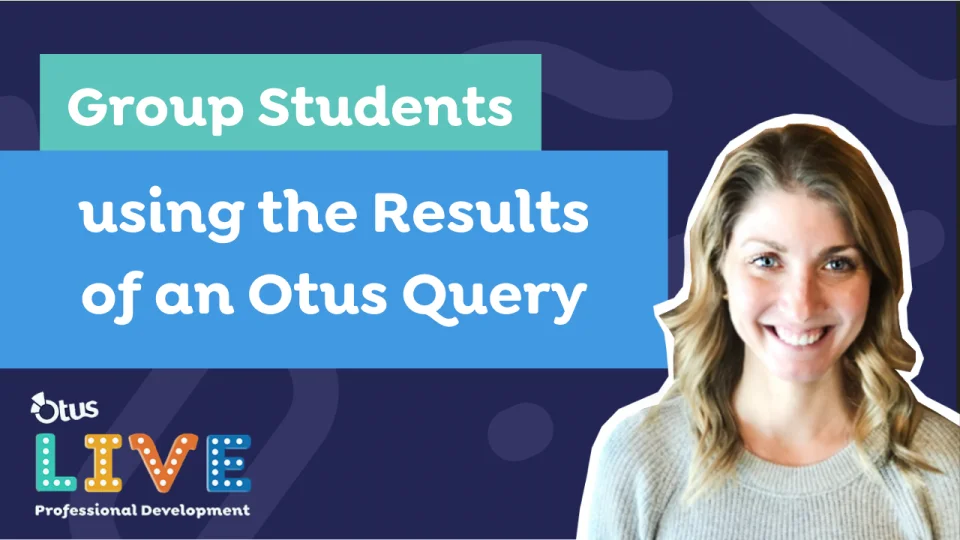
What are the 3 student needs in differentiated instruction?
There are three student-focused elements to consider when differentiating instruction: a student’s readiness level, a student’s interests, and a student’s learning needs.
When planning to divide groups up for differentiated instruction, a teacher must know each student’s readiness level, or knowledge, pertaining to the upcoming unit. Teachers can assess a student’s readiness level by looking at previous academic records, giving a pre-assessment, or asking students to complete a self-assessment or KWL (Know, Want to Know, Learned) Chart.
Additionally, it is very helpful for teachers to be able to group students by interests so that the teacher can tap into those interests when providing differentiated instructional approaches. A teacher can learn students’ interests through conversations, classroom activities, and student interest inventories.
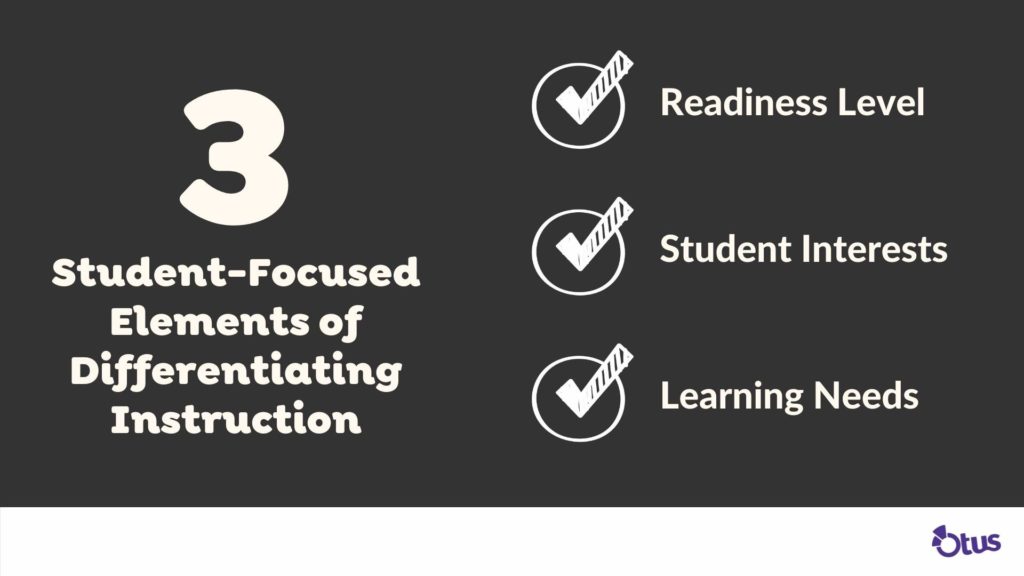
Finally, it is essential that a teacher uncover a student’s learning needs before grouping students for differentiated learning. This not only includes a student's preferred method of learning (e.g. visually, auditorily, or kinesthetically), but also the factors that influence a student’s learning (e.g. the student may be easily distracted by noise, feel overwhelmed in large groups, or work more successfully with others than alone). Teachers can learn this information by talking with students’ previous teachers, observing them in class, or through student self-assessments.
What are the 3 elements of differentiated instruction?
There are three instructional components to consider when differentiating instruction in the classroom: content, process, and product. Teachers may choose to adapt one or more of these as they plan their differentiated instruction.
When teachers adjust the content of their instruction, they are adapting what material each group of students needs to learn and what skills they need to master. While the overarching learning objectives remain the same, the depth of knowledge and application each group needs to master may vary, or teachers may switch up the curriculum each group uses.
When teachers adjust the process of their instruction, they are adapting the activities each group of students complete to master the content they are learning. Depending on the group’s abilities and interests, teachers may assign different types of activities to engage each group at their interest and skill level to practice mastery of the content. Additionally, teachers may provide different groups with different amounts of time to complete the tasks, or split certain groups into partners for better-focused work.
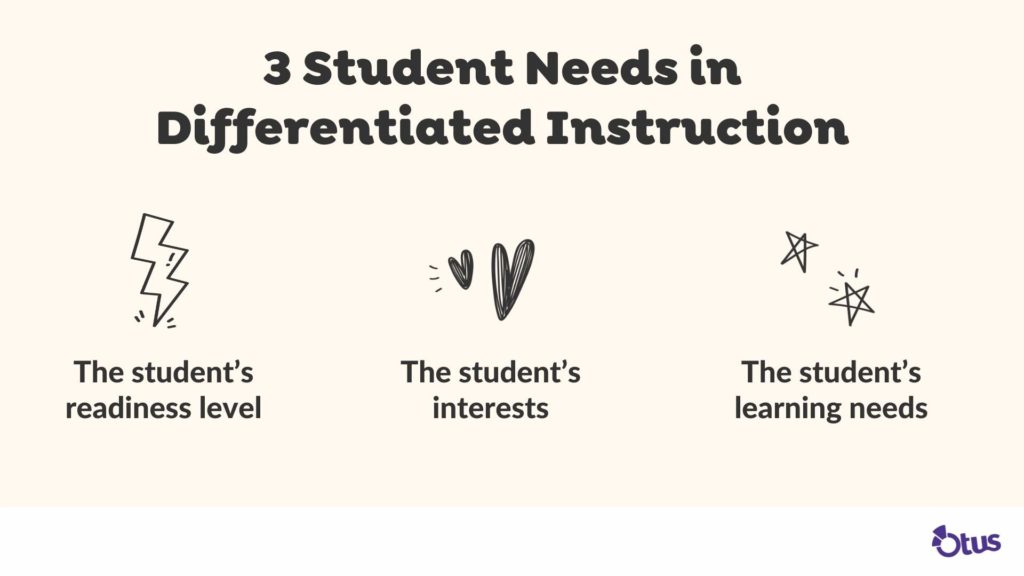
Finally, when teachers adjust the product, they are adapting the method each group of students uses to demonstrate mastery over what they have learned. While most teachers provide a standardized written test to allow them to analyze the overall effectiveness of the unit, those teachers also provide a variety of non-written options for students to choose from to demonstrate how they have personally engaged with and mastered the content.
It is important to note that some educators consider the learning environment as a fourth element of differentiated instruction. For example, some students who are internal processors may need extreme quiet to learn the content, while other students who are strong verbal processors may need other students to talk to master the content. Teachers must consider how the learning environment is affecting student achievement, and if grouping students in different environments will help them learn more effectively.
What are some differentiated instructional strategies?
There are many, many different types of differentiated instructional strategies. The following are just some ideas broken down by the three elements of differentiating instruction.
For those wanting to differentiate by content, teachers can consider using scaffolding or tiered content; crafting learning contracts; providing a variety of materials and presentation styles when presenting the content; or compacting—allowing students who have already mastered the content to move quickly through the unit and explore enrichment curriculum, instead.
For those wanting to differentiate by process, teachers can consider using learning centers, manipulatives, interactive journals, jigsaw activities, graphic organizers, or providing more or less time to certain groups. Providing high-quality student work samples can also be very helpful for students.
For those wanting to differentiate by product, teachers should ensure their summative assessment options include visual, auditory, or kinesthetic options, as well as the option to present before a group or more privately, such as in a pre-recorded video. Tiered activities designed around Bloom’s Taxonomy and added into a rubric for different points (e.g. “easier,” lower-level Bloom’s activities are worth fewer points) are also very helpful. Portfolios and self-assessments can also be highly effective when differentiating the product.
What are the challenges of differentiating learning?
Differentiating learning for students can be challenging on many different levels, especially because even as teachers work to thoughtfully group students, student needs can still vary greatly. For example, a student may have struggled with a subject at the beginning of the school year, but through focused intervention, may exceed grade-level expectations and need enrichment challenges by the end of the year. Or, a student may excel in one subject but struggle in another, or even excel at one aspect of a subject but need extra time and help with another aspect of that same subject.
This is why it is essential that teachers regularly use formative assessments, so that they can gauge not only where a student is struggling, but in what ways. To differentiate well, teachers must always be ready to switch up their instructional approach to meet students where they are at academically.
Additionally, this also makes the flexible grouping options of differentiated instruction so valuable. Regularly switching a student’s group allows that student to reach maximum learning potential and protects the student from feeling “labeled” as a certain learning type.
For teachers new to differentiated instruction, incorporating this framework can feel daunting or even too difficult to try. However, teachers do not need to add every element this article discusses from the outset. Teachers could begin by only differentiating one of the three elements (content, process, or product), only differentiating in one of their subject areas or for one of their (easier to manage) classrooms, or only differentiate for a small group of students. Even small changes can have big results, and many teachers find differentiated instruction not only more effective but far more rewarding in the long run.
Related Resources
Request a demo!
See exactly how Otus can help your school accelerate student growth and improve student outcomes – all while saving educators time.
